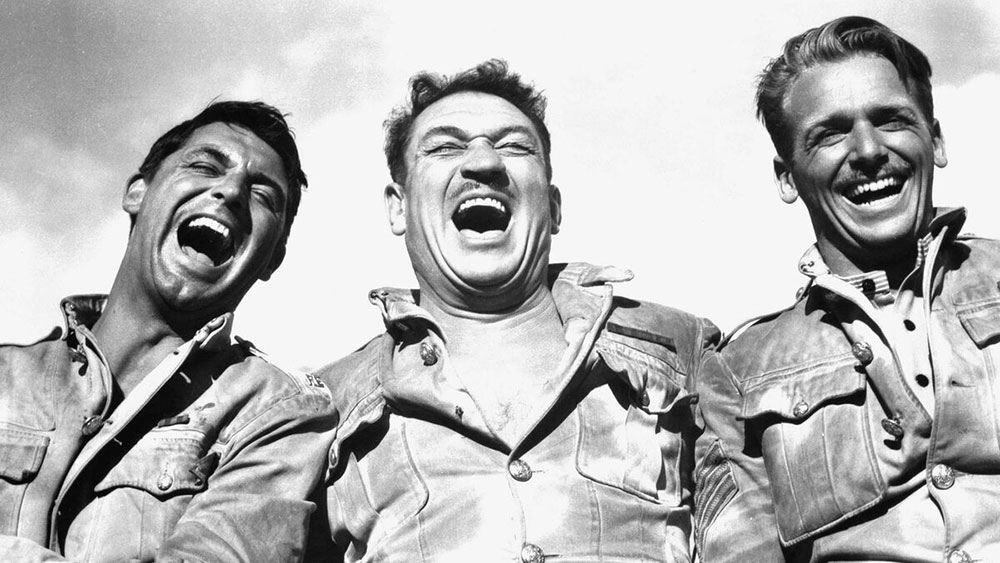While the word “problematic” is often applied with too little specificity, any discussion of George Stevens’s 1939 swashbuckler Gunga Din must first acknowledge its status as a deeply compromised and, indeed, problematic film. Adapted from a poem by Rudyard Kipling, the film is set in 1800s India and follows a trio of British soldiers—Cutter (Cary Grant), MacChesney (Victor McLaglen) and Ballantine (Douglas Fairbanks Jr.)—who each view the colonial landscape as a vessel for their grand adventures, treasure hunts, and personal glory. Its racist caricatures and generally uncritical eye to the colonial project mark it as a retrograde experience. Stereotypical portrayals abound in the narrative; Indian characters, including the titular Gunga Din, are played by white actors in brownface makeup. Even the central plot, in which our heroes are caught up in a battle against the Thuggee murder cult, draws on a dangerous exoticism and othering that will give contemporary audiences pause.
If the set-up of Gunga Din sounds vaguely familiar to viewers, it is likely due to its unmistakable influence on George Lucas and Steven Spielberg’s Indiana Jones and the Temple of Doom (1984). For a spectator familiar with Spielberg’s film, a sense of déjà vu will creep in at different junctures. Several sequences and images—the covert discovery of the cult in the throes of their worship of the goddess Kali and a climactic encounter on a rope bridge—were lifted wholesale from Stevens’s film, walking a thin line between homage and pure mimicry.
Though, much like its blockbuster imitator, Gunga Din is saddled with a plainly regressive ideology and tension emerges as the film proves to be an often captivating work of popular entertainment. Stevens introduces our three heroes in the midst of a daring, yet silly, escapade, immediately characterizing them as ne'er-do-wells whose charms are inseparable from their recklessness. The central drama is indeed motivated by a male resistance to responsibility, with Cutter and MacChesney displeased by Ballantine’s impending exit from the military service in favor of his marriage to a young woman (Joan Fontaine). If one was feeling particularly generous, it is possible to read this immaturity, in which zany hijinks are juxtaposed against the supposed nobility of the British army, as a subtle critique of these self-absorbed colonizers. However, this would be something of a stretch in a film that derives great pleasure from the “sheer, childish… idiocy”—as phrased by one disdainful officer—offered by Grant and his compatriots.
Stevens, who would later go on to make grand epics like Giant (1956), makes adroit use of the film’s enormous scope and desert settings, with the California mountains proving an often astonishing substitute for India. The director’s assured touch extends beyond the accelerated motion of the symphonic action sequences, with piercing close-ups, complex camera movements, and dynamic compositions providing plenty of formal variety. Memorable images, such as a close-up of Grant’s visage in the foreground and the murder of another British officer in silhouette in the background, proliferate throughout. Scored by Alfred Newman, the film maintains a brisk and robust pace, racing from one thrilling set piece to the next.
Yet, it is impossible to separate the film’s technical pleasures from its representational perils. What remains striking, however, is how easy it is to get swept up in this fleet-footed work, even as it never comes close to exculpating itself from its participation in these more disturbing tropes. Gunga Din finds classical Hollywood cinema at its most seductive and its most pernicious.
Gunga Din screens tonight, October 7, at Film Forum as part of the series “George Stevens.”



